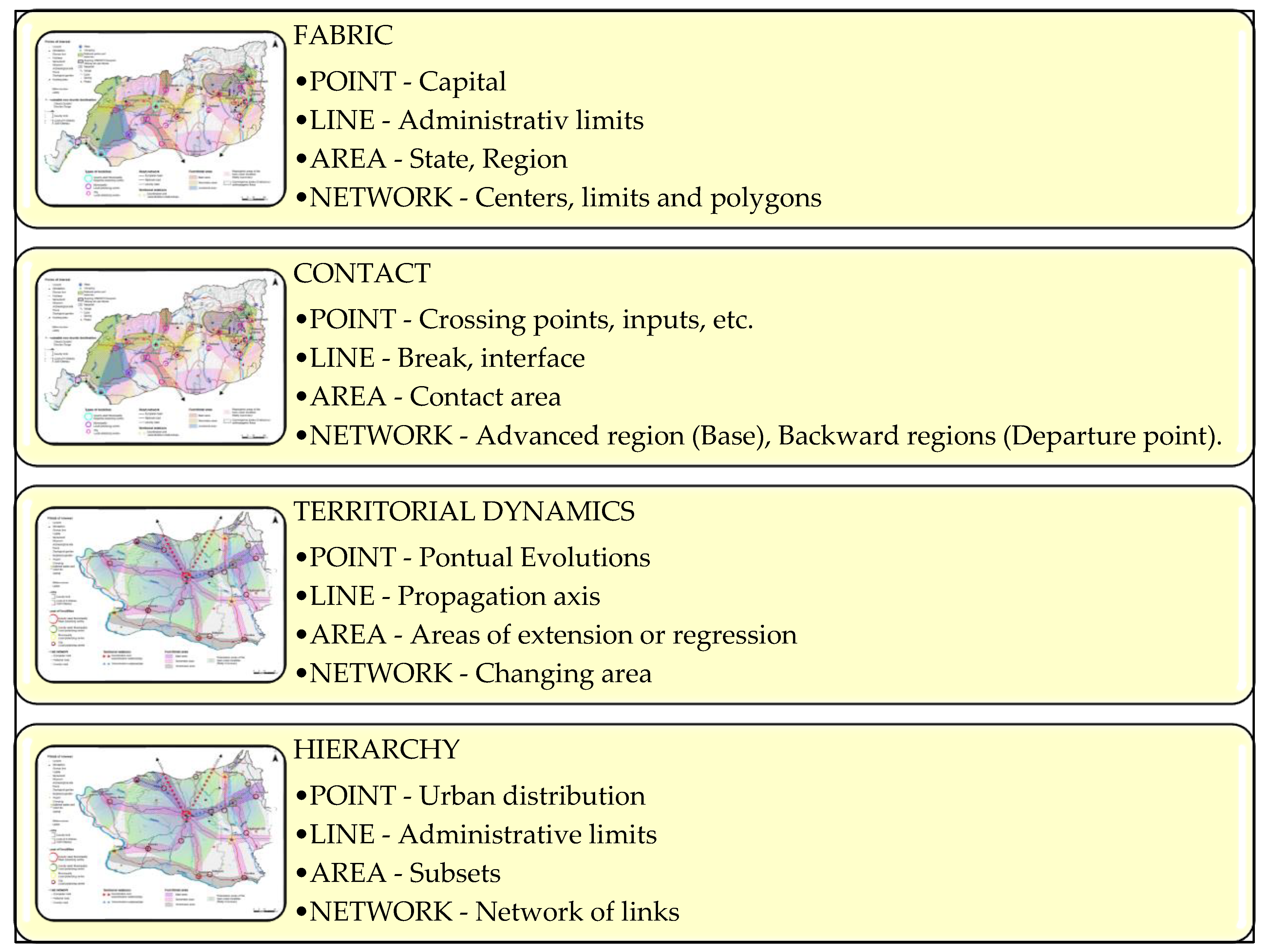Capitalization of Tourist Resources in the Post-COVID-19 Period—Developing the Chorematic Method for Oltenia Tourist Destination, Romania
Abstract
1. Introduction
2. Literature Review
3. Materials and Methodology
4. Results
Chorematic Analysis of the South-West Oltenia Region
5. Discussion
5.1. Capitalization of the Tourist Resources of Oltenia
5.2. Analysis of Forms of Tourism in Oltenia
5.2.1. Rural Tourism
- Improving the general infrastructure on which the economic revitalization of the rural village depends (road transport, rail transport, local roads, water network, sewage, telecommunications, electricity, and thermal energy);
- Forming farms, guesthouses, and tourist households, as well as organizing activities, but respecting local traditions and architecture, avoiding kitsch;
- The identification, inventory and exploitation of natural tourist resources; the development and modernization of those placed in the tourist circuit with special emphasis on entertainment, animation, and recreation;
- Drawing up a register of the main events in the life of the village (cultural, religious, traditions, exhibitions, fairs, etc.), memorials, craftsmen, and local rhapsodies, to present authentic tourist programs of rural-traditional village;
- The promotion of rural villages with natural and anthropogenic tourism potential, within international festivals, symposiums, and conferences with specific tourism, tourism fairs, and congresses;
- The practice of other forms of tourism, in correlation with rural tourism (tourism in nature—ecotourism, agritourism, speleological tourism, mountain tourism and water sports;
- The creation of new tourist routes, within the national and natural parks of Oltenia, with a negative impact on the environment;
- The construction of tourism-specific households called “ecological smart city”; the manager of such a household has the attribution to collaborate with the managers of tourist and agritourism guesthouses, with local councils, and with the administrators of protected areas for the ecological exploitation of existing resources within a rural village.
5.2.2. Glamping
5.3. Ecotourism
5.4. Regional-Tourist Identity Brand and Slogan
6. Conclusions
- Area—represents the geographical space of the Oltenia region, which is analysed in the form of a square, polygon, or triangle;
- Point—represents coordination and subordination relations with regional centres;
- the line—represents the boundary separating the geographical space in North Oltenia and South Oltenia;
- The flow—marks an asymmetry and a determining direction of action in the territory, that are the four functional axes of the region: main axes, secondary axes, junctional axes, and the anisotropic axis;
- The passageway—connects two open spaces, i.e., the infrastructure—roads;
- Circle—indicates the main categories of localities;
- The rhombus—represents the protected areas in Oltenia.
Author Contributions
Funding
Institutional Review Board Statement
Informed Consent Statement
Data Availability Statement
Conflicts of Interest
Abbreviations
| GIS | Geographic Information System (Software) |
| QGIS | application for geographic information systems (GIS) |
| NIS | National Institute of Statistics |
| Nui | Net utilization index of accommodation capacity in operation |
| Os | Overnights registered in a certain period |
| Tacio | Tourist accommodation capacity in operation |
| CTDP | County Territory Development Plan (Dolj, Gorj, Mehedinți, Olt and Vâlcea) |
| UNESCO | United Nations Educational, Scientific and Cultural Organization |
| IUCN | International Union for Conservation of Nature |
| SPA | Area of special avifaunistic protection |
| COVID-19 | infectious disease caused by the coronavirus (the latest virus of the 21st century) |
References
- UNWTO. Tourism towards 2030 Global Overview; UNWTO: Madrid, Spain, 2011; Available online: https://www.unwto.org/archive/global/press-release/2011-10-11/international-tourists-hit-18-billion-2030 (accessed on 16 September 2022).
- Gössling, S.; Hansson, C.B.; Hörstmeier, O.; Saggel, S. Ecological footprint annalysis as a tool to assess tourism sustainability. Ecol. Econ. 2002, 43, 199–211. [Google Scholar] [CrossRef]
- Katircioğlu, S.T. Testing the tourism-induced EKC hypothesis: The case of Singapore. Econ. Model. 2014, 41, 383–391. [Google Scholar] [CrossRef]
- Dogan, E.; Aslan, A. Exploring the relationship among CO2 emissions, real GDP, energy consumption and tourism in the EU and candidate countries: Evidence from panel models robust to heterogeneity and cross-sectional dependence. Renew. Sustain. Energy Rev. 2017, 77, 239–245. [Google Scholar] [CrossRef]
- Katircioglu, S.; Cizreliogullari, M.N.; Katircioglu, S. Estimating the role of climate changes on international tourist flows: Evidence from Mediterranean Island States. Environ. Sci. Pollut. Res. 2019, 26, 14393–14399. [Google Scholar] [CrossRef]
- Robaina-Alves, M.; Moutinho, V.; Costa, R. Change in energy-related CO2 (carbon dioxide) emissions in Portuguese tourism: A decomposition annalysis from 2000 to 2008. J. Clean. Prod. 2016, 111, 520–528. [Google Scholar] [CrossRef]
- Dolnicar, S.; Zare, S. COVID-19 and Airbnb—Disrupting the Disruptor. Ann. Tour. Res. 2020, 83, 102961. [Google Scholar] [CrossRef]
- Gössling, S.; Scott, D.; Hall, C.M. Pandemics, tourism and global change: A rapid assessment of COVID-19. J. Sustain. Tour. 2021, 29, 1–20. [Google Scholar] [CrossRef]
- Rice, W.L.; Mateer, T.; Taff, B.D.; Lawhon, B.; Reigner, N.; Newman, P. The COVID-19 pandemic continues to change the way people recreate outdoors: A second preliminary report on a national survey of outdoor enthusiasts amid the COVID-19 pandemic. SocArXiv 2020. [Google Scholar] [CrossRef]
- Zotic, V.; Puiu, V. The role of the integrated network concept in elaborating the territorial development choremes. Case study: The peri-urban zone of the Municipium of Bistrița. Rom. Rev. Reg. Stud. 2006, 2, 65–76. [Google Scholar]
- Marchand, J.; Gaudin, S. Chorèmes et systèmes. Retours sur deux approches complémentaires de modélisations graphiques en analyse spatiale et leurs devenirs. L’Information Géographique 2022, 86, 72–99. [Google Scholar] [CrossRef]
- Reimer, A.W. Understanding Chorematic Diagrams: Towards a Taxonomy. Cartogr. J. 2010, 47, 330–350. [Google Scholar] [CrossRef]
- Bahaire, T.; Elliott-White, M. The Application of Geographical Information Systems (GIS) in Sustainable Tourism Planning: A Review. J. Sustain. Tour. 1999, 7, 159–174. [Google Scholar] [CrossRef]
- Achamyeleh, Z.; Makonnen, T. GIS and Remote Sensing Based Site Suitablity Analyisis for Tourism Development in East Gojjam Zone, Ethiopia. J. Remote Sens. GIS 2022, 11, 1000252. [Google Scholar] [CrossRef]
- Albuquerque, H.; Costa, C.; Martins, F. The use of Geographical Information Systems for Tourism Marketing purposes in Aveiro region (Portugal). Tour. Manag. Perspect. 2018, 26, 172–178. [Google Scholar] [CrossRef]
- Mäntymaa, E.; Tyrväinen, L.; Juutinen, A.; Kurttila, M. Importance of forest landscape quality for companies operating in nature tourism areas. Land Use Policy 2021, 107, 104095. [Google Scholar] [CrossRef]
- Rahayuningsih, T.; Muntasib, E.K.S.H.; Prasetyo, L.B. Nature Based Tourism Resources Assessment Using Geographic Information System (GIS): Case Study in Bogor. Procedia Environ. Sci. 2016, 33, 365–375. [Google Scholar] [CrossRef]
- Ristić, D.; Vukoičić, D.; Milinčić, M. Tourism and sustainable development of rural settlements in protected areas—Example NP Kopaonik (Serbia). Land Use Policy 2019, 89, 104231. [Google Scholar] [CrossRef]
- Vukoičić, D.; Ristić, D.; Milinčić, U.; Petrović, D.; Mihajlović, L.; Božović, S.; Protić, B. Assessment of the Attractiveness of Natural Resources and Landscapes of the Kopaonik National Park (Serbia): Framework and Importance for Tourism Development. Pol. J. Environ. Stud. 2023, 32, 281–295. [Google Scholar] [CrossRef]
- Valjarević, A.; Vukoičić, D.; Valjarević, D. Evaluation of the tourist potential and natural attractivity of the Lukovska Spa. Tour. Manag. Perspect. 2017, 22, 7–16. [Google Scholar] [CrossRef]
- Craig, C.A. Camping, glamping, and coronavirus in the United States. Ann. Tour. Res. 2021, 89, 103071. [Google Scholar] [CrossRef]
- Ellerbrock, M.J.; Hite, J.C. Factors Affecting Regional Employment in Tourism in the United States. J. Travel Res. 1980, 18, 26–32. [Google Scholar] [CrossRef]
- Radisic, B.B.; Basan, L. The logistics of selling a destination’s tourism product. Tour. Hosp. Manag. 2007, 13, 725–732. [Google Scholar] [CrossRef]
- Rosentraub, M.S.; Joo, M. Tourism and economic development: Which investments produce gains for regions? Tour. Manag. 2009, 30, 759–770. [Google Scholar] [CrossRef]
- Kongbuamai, N.; Bui, Q.; Yousaf, H.M.A.U.; Liu, Y. The impact of tourism and natural resources on the ecological footprint: A case study of ASEAN countries. Environ. Sci. Pollut. Res. 2020, 22, 19251–19264. [Google Scholar] [CrossRef]
- Balsalobre-Lorente, D.; Shahbaz, M.; Roubaud, D.; Farhani, S. How economic growth, renewable electricity and natural resources contribute to CO2 emissions? Energy Policy 2018, 113, 356–367. [Google Scholar] [CrossRef]
- Hassan, S.T.; Xia, E.; Khan, N.H.; Shah, S.M.A. Economic growth, natural resources, and ecological footprints: Evidence from Pakistan. Environ. Sci. Pollut. Res. Int. 2019, 26, 2929–2938. [Google Scholar] [CrossRef]
- Zafar, M.W.; Zaidi, S.A.H.; Khan, R.N.; Mirza, F.M.; Hou, F.; Kirmani, S.A.A. The impact of natural resources, human capital, and foreign direct investment on the ecological footprint: The case of the United States. Resour. Policy 2019, 63, 101428. [Google Scholar] [CrossRef]
- Katircioglu, S.; Gokmenoglu, K.K.; Eren, B.M. Testing the role of tourism development in ecological footprint quality: Evidence from top 10 tourist destinations. Environ. Sci. Pollut. Res. 2018, 25, 33611–33619. [Google Scholar] [CrossRef]
- Eugenio-Martin, J.L.; Morales, N.M.; Scarpa, R. Tourism and Economic Growth in Latin American Gountries: A Panel Data Approach; FEEM Working Paper; SSRN: Rochester, NY, USA, 2004; No. 26. [Google Scholar] [CrossRef]
- Khadaroo, J.; Seetanah, B. Transport infrastructure and tourism development. Ann. Tour. Res. 2007, 34, 1021–1032. [Google Scholar] [CrossRef]
- Louca, C. Income and Expenditure in the Tourism Industry: Time series evidence from Cyprus. Tour. Econ. 2006, 24, 603–617. [Google Scholar] [CrossRef]
- Naudé, W.A.; Saayman, A. Determinants of Tourist Arrivals in Africa: A Panel Data Regression Analysis. Tour. Econ. 2005, 11, 365–391. [Google Scholar] [CrossRef]
- Capone, F.; Boix, R. Sources of growth and competitiveness of local tourist production systems: An application to Italy (1991–2001). Ann. Reg. Sci. 2008, 42, 209–224. [Google Scholar] [CrossRef]
- Lazzeretti, L.; Capone, F. Spatial Spillovers and Employment Dynamics in Local Tourist Systems in Italy (1991–2001). Eur. Plan. Stud. 2009, 17, 1665–1683. [Google Scholar] [CrossRef]
- Cole, S. A Logistic Tourism Model: Resort Cycles, Globalization, and Chaos. Ann. Tour. Res. 2009, 36, 689–714. [Google Scholar] [CrossRef]
- Cole, S. Synergy and congestion in the tourist destination life cycle. Tour. Manag. 2012, 33, 1128–1140. [Google Scholar] [CrossRef]
- Yang, Y.; Fik, T. Spatial effects in regional tourism growth. Ann. Tour. Res. 2014, 46, 144–162. [Google Scholar] [CrossRef]
- Cândea, M.; Erdeli, G.; Simion, T.; Peptenatu, D. Potențialul Turistic al României și Amenajarea Turistică a Spațiului; Editura Universitară: Bucharest, Romania, 2003. [Google Scholar]
- Cândea, M.; Stăncioiu, F.-A.; Mazilu, M.; Marinescu, R.C. The competitiveness of the tourist destination on the future tourism market. WSEAS Trans. Bus. Econ. 2009, 6, 374–384. [Google Scholar]
- Garrod, B.; Wornell, R.; Youell, R. Re-conceptualising rural resources as countryside capital: The case of rural tourism. J. Rural Stud. 2006, 22, 117–128. [Google Scholar] [CrossRef]
- Rosalina, P.D.; Dupre, K.; Wang, Y. Rural tourism: A systematic literature review on definitions and challenges. J. Hosp. Tour. Manag. 2021, 47, 134–149. [Google Scholar] [CrossRef]
- Popescu, L.; Niță, A.; Iordache, C. Place Identity, Urban Tourism and Heritage Interpretation: A Case Study of Craiova, Romania. J. Balk. Near East. Stud. 2020, 22, 494–505. [Google Scholar] [CrossRef]
- Light, D.; Crețan, R.; Voiculescu, S.; Jucu, I.S. Introduction: Changing Tourism in the Cities of Post-communist Central and Eastern Europe. J. Balk. Near East. Stud. 2020, 22, 465–477. [Google Scholar] [CrossRef]
- Light, D. Gazing on communism: Heritage tourism and post-communist identities in Germany, Hungary and Romania, Tourism Geographies. Int. J. Tour. Space Place Environ. 2000, 2, 157–176. [Google Scholar] [CrossRef]
- Crețan, R.; Light, D.; Richards, S.; Dunca, A.-M. Encountering the victims of Romanian communism: Young people and empathy in a memorial museum. Eurasian Geogr. Econ. 2018, 59, 632–656. [Google Scholar] [CrossRef]
- Kircher, J.; Lee, S.; Jamal, T.; Donaldson, J.P.; Regenerating Tourism with an Ethic of Care and Empathy. Travel and Tourism Research Association: Advancing Tourism Research Globally. 2022. Available online: https://scholarworks.umass.edu/cgi/viewcontent.cgi?article=2833&context=ttra (accessed on 21 August 2022).
- Heng, J.; Lo, A. Evaluating the Tourism Potential of Public Museums in Hangzhou: A Supply-Side Perspective. J. Travel Tour. Mark. 2010, 27, 287–305. [Google Scholar] [CrossRef]
- Martinuci, O.S. Geography, Graphical Semiology and Corematic. Mercator 2016, 15, 37–52. [Google Scholar] [CrossRef]
- Laurini, R.; Sebillo, M.; Vitiello, G.; Sol-Martinez, D.; Raffort, F. Computer-Generated Visual Summaries of Spatial Databases: Chorems or Not Chorems? Surv. Perspect. Integr. Environ. Soc. 2009, 2, 1–8. Available online: https://journals.openedition.org/sapiens/795 (accessed on 24 August 2022).
- Dhieb, M. Using Chorems in Graphical Modeling: The Case of the Kingdom of Saudi Arabia. Curr. Urban Stud. 2020, 8, 265–283. [Google Scholar] [CrossRef]
- Brunet, R. Organisation de l’espace et cartographie de modèles: Les villes du Massif Central. L’Espace Géographique 1972, 1, 43–48. [Google Scholar] [CrossRef]
- Brunet, R. La composition des modèles dans l’analyse spatiale. L’Espace Géographique 1980, 4, 253–265. Available online: https://www.persee.fr/doc/spgeo_0046-2497_1980_num_9_4_3572 (accessed on 24 August 2022). [CrossRef]
- Brunet, R. La carte-modèle et les chorèmes. Mappemonde 1986, 86, 2–6. [Google Scholar] [CrossRef]
- Brunet, R. La Carte, Mode D’emploi; Fayard-Reclus: Paris, France, 1987. [Google Scholar]
- Arreghini, L. La Modélisation Graphique Dans la Réalisation des Atlas Pour le Développement. In Journées Géographiques de l’ORSTOM; de la Géographie, M., Ed.; Institut de Recherche pour le Development: Montpellier, France, 1995. [Google Scholar]
- Rodier, X.; Grataloup, C.; Guilloteau, C. Dossier: Chrono-chorématique urbaine. Rev. Mappemonde 2014, 114, 1–21. [Google Scholar]
- Del Fatto, V.; Laurini, R.; Lopez, K.; Sebillo, M.; Tortora, G.; Tucci, M.; Vitiello, G. Chorem Editing—Visual Summary of Spatial Database Content. In Proceedings of the 13th International Conference on Distributed Multimedia Systems—Workshop on Visual Languages and Computing, San Francisco, CA, USA, 6 September 2007; pp. 256–259. [Google Scholar]
- Del Fatto, V.; Laurini, R.; Lopez, K.; Loreto, R.; Milleret-Raffort, F.; Sebillo, M.; Sol-Martinez, D.; Vitiello, G. Potentialities of Chorems as Visual Summaries of Geographic Databases Contents. In Advances in Visual Information Systems; Lecture Notes in Computer Science; Springer: Berlin/Heidelberg, Germany, 2007; Volume 4781, pp. 537–548. [Google Scholar] [CrossRef]
- Del Fatto, V.; Laurini, R.; Lopez, K.; Sebillo, M.; Vitiello, G. A Chorem-Based Approach for Visually Synthesizing Complex Phenomena. Inf. Vis. 2008, 7, 253–264. [Google Scholar] [CrossRef]
- Coimbra, R.A. ChorML: XML Extension for Modeling Visual Summaries of Geographic Databases Based on “Chorems”. Master’s Thesis, Université Claude Bernard Lyon, LIRIS (Laboratoire d’InfoRmatique en Image et Systèmes d’information), Villeurbanne, France, 2008. [Google Scholar]
- Cherni, I.; Lopez, K.; Laurini, R.; Faiz, S.; Un langage et un générateur pour représenter les résumés visuels de bases de données géographiques. Revue des Nouvelles Technologies de l’Information 2010, E-19, 103–114. Available online: https://www.researchgate.net/publication/229022233 (accessed on 27 August 2022).
- Brunet, R. Le Déchiffrement Du Monde. In Théorie et Pratique de la Géographie; Belin: Paris, France, 2001. [Google Scholar]
- Bertin, J. Sémiologie Graphique. In Les Diagrammes Les Réseaux Les Cartes; Gauthier-Villars: Paris, France, 1967. [Google Scholar]
- Girardi, E.P. Atlas da Questão Agrária Brasileira, Tese (Doutorado em Geografia); FCT/UNESP: Presidente Prudente, 2008; Available online: https://repositorio.unesp.br/bitstream/handle/11449/105064/girardi_ep_dr_prud.pdf?s (accessed on 2 September 2022).
- Manoj, K.M.; Narayan, C.J. Exploring the potential for development of geotourism in Rarh Bengal, Eastern India using M-GAM. Int. J. Geoheritage Park. 2021, 9, 313–322. [Google Scholar] [CrossRef]
- Klippel, A.; Tappe, H.; Kulik, L.; Lee, P.U. Wayfinding Choremes: A Language for Modeling Conceptual Route Knowledge. J. Vis. Lang. Comput. 2005, 16, 311–329. [Google Scholar] [CrossRef]
- Niță, A.; Drăguleasa, I.-A. Perception and development of rural tourism in Vâlcea county. An. Univ. Geogr. 2022, 23, 73–97. [Google Scholar] [CrossRef]
- Turism, Metadate—Biroul Național de Statistică. Available online: https://statistica.gov.md/public/files/Metadate/Turism.pdf (accessed on 23 September 2022).
- Erdeli, G.; Cucu, V. România: Populație. Așezări Umane. In Economie, Transversal; Publishing House: București, Romania, 2007. [Google Scholar]
- Cocean, P.; Filip, S. Geografia Regională a României. Ediția a II-a; Editura Presa Universitară Clujeană: Cluj-Napoca, Romania, 2011. [Google Scholar]
- Cocean, P. Geografie Regională. Ediția a III-A; Editura Presa Universitară Clujeană: Cluj-Napoca, Romania, 2010. [Google Scholar]
- Available online: https://www.openstreetmap.org/export#map=8/45.487/23.450 (accessed on 17 August 2022).
- Available online: http://www.mmediu.ro/articol/date-gis/434 (accessed on 17 August 2022).
- Available online: http://www.anpm.ro/documents/19431/40398961/PATJ+DOLJ_var1.pdf/500e6298-baf2-4817-ba27-d34eb63dbbd4#:~:text=Planul%20de%20amenajare%20a%20teritoriului,teritoriul%20pe%20care%20il%20gestioneaz%C4%83 (accessed on 17 August 2022).
- Available online: https://www.cjgorj.ro/consiliul_judetean_gorj/activitati/urbanism-si-amenajarea-teritoriului/p-a-t-j-gorj/ (accessed on 18 August 2022).
- Available online: https://www.cjmehedinti.ro/web/guest/plan-strategic (accessed on 18 August 2022).
- Available online: https://www.cjolt.ro/pozearticole/documente/cjolt/gallery/patj-olt/patj-olt-2014.pdf (accessed on 18 August 2022).
- Available online: http://www.cjvalcea.ro/index.php/urbanism-si-amenajarea-teritoriului/plan-de-amenajare-a-teritoriului-judetean-valcea-partea-1 (accessed on 18 August 2022).
- Cocean, P. Geografia Regională a României. Ediția a III-a; Presa Universitară Clujeană Publishing House: Cluj-Napoca, Romania, 2010. [Google Scholar]
- Ianoș, I. Sisteme Teritoriale, o Abordare Geografică; Editura Tehnică: Bucharest, Romania, 2000. [Google Scholar]
- Tsaur, S.-H.; Lin, Y.-C.; Lin, J.-H. Evaluating ecotourism sustainability from the integrated perspective of resources, community and tourism. Tour. Manag. 2006, 27, 640–653. [Google Scholar] [CrossRef]
- Norton, B.G. Why Preserve Natural Variety? Princeton University Press: Princeton, NJ, USA, 1987. [Google Scholar]
- Nistoreanu, P.; Aluculesei, A.-C. Can Spa Tourism Enhance Water Resourcec and Turn Them into a National Brand? A Theoretical Review about the Romanian Case. Information 2021, 12, 270. [Google Scholar] [CrossRef]
- Gössling, S. Tourism and Water. In Tourism and Global Environmental Change; Routledge: London, UK, 2015. [Google Scholar]
- Béki, P. Water Sports on the Hungarian Sports. In Some Recent Research from Economics and Business Studies; Karlovitz, T.J., Ed.; International Research Institute SRO: Komárno, Slovakia, 2018; pp. 81–90. [Google Scholar]
- Cristian-Constantin, D.; Radu-Daniel, P.; Daniel, P.; Laura Georgiana, C.; Igor, S. The Role of SPA Tourism in the Development of Local Economies from Romania. Procedia Econ. Financ. 2015, 23, 1573–1577. [Google Scholar] [CrossRef]
- Antonelli, M.; Donelli, D. Respiratory rehabilitation for post-COVID-19 patients in spa centers: First steps from theory to practice. Int. J. Biometeorol. 2020, 64, 1811–1813. [Google Scholar] [CrossRef]
- Sinan, K. Spa therapy (balneotherapy) for rehabilitation of survivors of COVID-19 with persistent symptoms. Med. Hypotheses 2021, 146, 110472. [Google Scholar] [CrossRef]
- Molinillo, S.; Ekinci, Y.; Whyatt, G.; Occhiocupo, N.; Stone, M. Private Label Management: Insights and Research Directions. In Handbook of Research on Strategic Retailing of Private Label Products in a Recovering Economy; IGI Global: Hershey, PA, USA, 2016. [Google Scholar] [CrossRef]
- Aluculesei, A.-C.; Nistoreanu, P.; Avram, D.; Nistoreanu, B.G. Past and Future Trends in Medical Spas: A Co-Word Analysis. Sustainability 2021, 13, 9646. [Google Scholar] [CrossRef]
- Oleśniewicz, P.; Pytel, S.; Markiewicz-Patkowska, J.; Szromek, A.R.; Jandová, S. A Model of the Sustainable Management of the Natural Environment in National Parks—A Case Study of National Parks in Poland. Sustainability 2020, 12, 2704. [Google Scholar] [CrossRef]
- Burchard-Dziubińska, M.; Rzeńca, A.; Drzazga, D. Zrównoważony Rozwój: Naturalny Wybór; Wydawnictwo Uniwersytetu Łódzkiego: Lodz, Polonia, 2014. [Google Scholar]
- IUCN. 2018 IUCN (n.d.), Category II: National Park. Available online: https://www.iucn.org/theme/protected-areas/about/protected-areas-categories/category-ii-national-park (accessed on 4 February 2020).
- Wang, J.Z. National parks in China: Parks for people or for the nation? Land Use Policy 2019, 81, 825–833. [Google Scholar] [CrossRef]
- Kaffashi, S.; Yacob, M.R.; Clark, M.S.; Radam, A.; Mamat, M.F. Exploring visitors’ willingness to pay to generate revenues for managing the National Elephant Conservation Center in Malaysia. For. Policy Econ. 2015, 56, 9–19. [Google Scholar] [CrossRef]
- O’Hara, K.L.; Ina, A.B.; Diaci, J.; Anić, I.; Boydak, M.; Curovic, M.; Govedar, Z.; Grigoriadis, N.; Ivojevic, S.; Keren, S.; et al. Culture and silviculture: Origins and evolution of silviculture in Southeast Europe. Int. For. Rev. 2018, 20, 130–143. [Google Scholar] [CrossRef]
- Crespo-Cebada, E.; Díaz-Caro, C.; Robina-Ramírez, R.; Sánchez-Hernández, M.I. Is Biodiversity a Relevant Attribute for Assessing Natural Parks? Evidence from Cornalvo Natural Park in Spain. Forests 2020, 11, 410. [Google Scholar] [CrossRef]
- Kang, M.; Gretzel, U. Effects of podcast tours on tourist experiences in a national park. Tour. Manag. 2012, 33, 440–455. [Google Scholar] [CrossRef]
- Sorakunnas, E. Dimensions and drivers of national park experiences: A longitudinal study of independent visitors. J. Outdoor Recreat. Tour. 2020, 31, 100311. [Google Scholar] [CrossRef]
- Rice, L.W.; Taff, B.D.; Miller, Z.D.; Newman, P.; Zipp, K.Y.; Pan, B.; Newton, J.N.; D’Antonio, A. Connecting motivations to outcomes: A study of park visitors’ outcome attainment. J. Outdoor Recreat. Tour. 2020, 29, 100272. [Google Scholar] [CrossRef]
- Walls, A.R.; Okumus, F.; Wang, Y.R.; Kwun, D.J.-W. An epistemological view of consumer experiences. Int. J. Hosp. Manag. 2011, 30, 10–21. [Google Scholar] [CrossRef]
- Popescu, L.; Bădiță, A.; Băloi, I.; Mazilu, M. Competitiv, Durabil, Inovativ și Identitar în Conturarea Destinației Turistice Oltenia, 2015, Editura Universitaria, Craiova, Romania. Available online: https://www.academia.edu/13269532/Competitiv_durabil_inovativ_si_identitar_in_conturarea_destinatiei_turistice_Oltenia (accessed on 5 January 2022).
- Cîrstea, G.; Constantinescu, D. Vîlcea. In Monografie; Editura Sport-Turism: Bucharest, Romania, 1980. [Google Scholar]
- Badea, L.; Rusenescu, C. Județul Vâlcea; Editura Academiei, R.S.R.: Bucharest, Romania, 1970. [Google Scholar]
- Wen, Z. China’s domestic tourism: Impetus, development and trends. Tour. Manag. 1997, 18, 565–571. [Google Scholar] [CrossRef]
- Wu, B.; Zhu, H.; Xu, X. Trends in China’s domestic tourism development at the turn of the century. Int. J. Contemp. Hosp. Manag. 2000, 12, 296–299. [Google Scholar] [CrossRef]
- Adamov, T.; Ciolac, R.; Iancu, T.; Brad, I.; Peț, E.; Popescu, G.; Șmuleac, L. Sustainability of Agritourism Activity. Initiatives and Challenges in Romanian Mountain Rural Regions. Sustainability 2020, 12, 2502. [Google Scholar] [CrossRef]
- Ciolac, R.; Rujescu, C.; Constantinescu, S.; Adamov, T.; Dragoi, M.C.; Lile, R. Management of a Tourist Village Establishment in Mountainous Area through Analysis of Costs and Incomes. Sustainability 2017, 9, 875. [Google Scholar] [CrossRef]
- Nistoreanu, P. Turismul Rural-O Afacere Mică cu Perspective Mari; Editura Didactică şi Pedagogică: Bucharest, Romania, 1999. [Google Scholar]
- Ciolac, R.; Csosz, I.; Rujescu, C.; Nita, S.; Ilie, A.; Bogdan, N. Managerial approach of rural tourism through holiday village-realities and profitability. J. Biotechnol. 2012, 161, 21. [Google Scholar] [CrossRef]
- Institutul Național de Statistică, TEMPO. Available online: http://statistici.insse.ro:8077/tempo-online/#/pages/tables/insse-table (accessed on 21 September 2022).
- Pongsiri, M.J.; Roman, J.; Ezenwa, V.O.; Goldberg, T.L.; Koren, H.S.; Newbold, S.C.; Ostfeld, R.S.; Pattanayak, S.K.; Salkeld, D.J. Biodiversity loss affects global disease ecology. BioScience 2009, 59, 945–954. [Google Scholar] [CrossRef]
- Labonte, R.; Mohindra, K.; Schrecker, T. The growing impact of globalization for health and public health practice. Annu. Rev. Public Health 2011, 32, 263–283. [Google Scholar] [CrossRef]
- Fernandes, S.; Ferreira, D.; Alves, T.; de Sousa, B.M.B. Glamping and the Development of Sustainable Tourism: A Portuguese Case Study. In Handbook of Sustainable Development and Leisure Services; World Sustainability Series; Lubowiecki-Vikuk, A., de Sousa, B.M.B., Derčan, B.M., Filho, W.L., Eds.; Springer: Cham, Switzerland, 2021; pp. 201–222. [Google Scholar] [CrossRef]
- Craig, C.A.; Karabas, I. Glamping after the coronavirus pandemic. Tour. Hosp. Res. 2021, 21, 251–256. [Google Scholar] [CrossRef]
- Brooker, E.; Joppe, M. Trends in camping and outdoor hospitality—An international review. J. Outdoor Recreat. Tour. 2013, 3–4, 1–6. [Google Scholar] [CrossRef]
- Ceballos-Lascurain, H. Tourism, Ecotourism, and Protected Areas: The State of Nature-Based Tourism around the World and Guidelines for Its Development; IUCN: Cambridge, UK, 1996. [Google Scholar]
- McCool, S.F.; Watson, A.E. (Eds.) Linking Tourism, the Environmental, and Sustainability; General Technical Reports INNNT-GTR-323; USDA, Forest Service, Intermiuntain Research Station: Ogden, UT, USA, 1995. [Google Scholar]
- Briassoulis, H. Sustainable Development and its Indicators: Through a Planner’s Glass Darkly. J. Environ. Plan. Manag. 2001, 44, 409–427. [Google Scholar] [CrossRef]
- Twining-Ward, L.; Butler, R. Implementing STD on a Small Island: Development and Use of Sustainable Tourism Development Indicators in Samoa. J. Sustain. Tour. 2002, 10, 363–387. [Google Scholar] [CrossRef]
- Dorobanţu, M.R.; Nistoreanu, P. Hospitality—A component of Romanian rural tourism products. Cactus Tour. J. 2012, 3, 17–23. [Google Scholar]
- UNWTO. Ecotourism and Protected Areas. 2020. Available online: https://www.unwto.org/sustainable-development/ecotourism-and-protected-areas (accessed on 23 June 2021).
- Fennell, D.A. Ecotourism. In ternational Encyclopedia of Human Geography. In Department of Tourism and Environment; Brock University: St. Catharines, ON, Canada, 2020; pp. 51–55. [Google Scholar]
- Nistoreanu, P.; Aluculesei, A.-C.; Avram, D. Is Green Marketing a Label for Ecotourism? The Romanian Experience. Information 2020, 11, 389. [Google Scholar] [CrossRef]
- Ruiz-Real, J.L.; Uribe-Toril, J.; Gázquez-Abad, J.C. Destination branding: Opportunities and new challenges. J. Destin. Mark. Manag. 2020, 17, 100453. [Google Scholar] [CrossRef]
- Buhalis, D.; Park, S. Brand management and concreation lessons from tourism and hospitality: Introduction to the special issue. J. Prod. Brand Manag. 2021, 30, 1–11. [Google Scholar] [CrossRef]
- Ritchie, J.R.B.; Ritchie, J.B.R. The Branding of Tourism destination. In Past Achievements and Future Challenges. In Proceedings of the 1998 Annual Congress of the International Association of Scientific Experts in Tourism, Destination Marketing: Scopes and Limitations; Keller, P., Ed.; International Association of Scientific Experts in Tourism: Marrakech, Morocco, 1998; pp. 89–116. [Google Scholar]
- Stăncioiu, A.-F.; Teodorescu, N.; Pârgaru, I.; Vlădoi, A.-D.; Băltescu, C. Imaginea destinației turistice—Element de susținere în construcția brandului turistic regional. Studiu de caz: Muntenia. Econ. Teor. Și Apl. 2011, 17, 139–152. [Google Scholar]
- Govers, R.; Go, F. Place Branding: Glocal, Virtual, and Physical Identities, Constructed, Imagined and Experienced; Palgrave Macmillan: London, UK, 2009. [Google Scholar]
- Kim, K.; Uysal, M.; Sirgy, J.M. How does tourism in a community impacts the quality of life of community ersidents? Tour. Manag. 2013, 36, 527–540. [Google Scholar] [CrossRef]
- Lupi, C.; Giaccio, V.; Mastronardi, L.; Giannelli, A.; Scardera, A. Exploring the features of agritourism and its contribution to rural development in Italy. Land Use Policy 2017, 64, 383–390. [Google Scholar] [CrossRef]
- Turnock, D. Sustainable rural tourism in romanian Carpatians. Geogr. J. 1999, 165, 192–199. [Google Scholar] [CrossRef]
- Marin, D. Study on the economic impact of tourism and of agritourism on local communities. Res. J. Agric. Sci. 2015, 47, 160–163. [Google Scholar]
- Ciolac, R.; Adamov, T.; Iancu, T.; Popescu, G.; Lile, R.; Rujescu, C.; Marin, D. Agritourism—A sustainable development factor for improving the ‘health’ of rural settlements. Case study apuseni mountains area. Sustainability 2019, 11, 1467. [Google Scholar] [CrossRef]
- Călina, A.; Călina, J.; Iancu, T. Research regarding the implementation, development and impact of Agritourism on Romania’s rural areas between 1990 and 2015. Environ. Eng. Manag. J. 2017, 16, 157–168. [Google Scholar] [CrossRef]
- Istrate, I.; Bran, F.; Roşu, G. Economia Turismului şi Mediul Înconjurător; Editura Economică: Bucharest, Romania, 1996. [Google Scholar]
- Hall, R.D.; Kirkpatrick, I.; Mitchell, M. Rural Tourism and Sustainable Business; Channel View Publications: Bristol, UK, 2005. [Google Scholar]
- Font, X.; Mccabe, S. Sustainability and marketing in tourism: Its contexts, paradoxes, approaches, challenges and potential. J. Sustain. Tour. 2017, 25, 869–883. [Google Scholar] [CrossRef]
- Alén, E.; Losada, N.; Domínguez, T. The Impact of Ageing on the Tourism Industry: An Approach to the Senior Tourist Profile. In Social Indicators Research: An International and Interdisciplinary Journal for Quality-of-Life Measurement; Springer: Berlin/Heidelberg, Germany, 2016; Volume 127, pp. 303–322. [Google Scholar]
- Dann, G.M.S. Senior Tourism and Quality of Life. J. Hosp. Leis. Mark. 2002, 9, 5–19. [Google Scholar] [CrossRef]
- UNWTO. Young People Must Be Active Participants as We Rethink and Restart Tourism, News on 7 July 2022. Available online: https://www.unwto.org/news/young-people-must-be-active-participants-as-we-rethink-and-restart-tourism (accessed on 17 January 2023).
- Light, D.; Creţan, R.; Dunca, A.M. Education and post-communist transitional justice: Negotiating the communist past in a memorial museum. Southeast Eur. Black Sea Stud. 2019, 19, 565–584. [Google Scholar] [CrossRef]
- Light, D.; Creţan, R.; Dunca, A.-M. Museums and Transitional Justice: Assessing the Impact of a Memorial Museum on Young People in Post-Communist Romania. Societies 2021, 11, 43. [Google Scholar] [CrossRef]
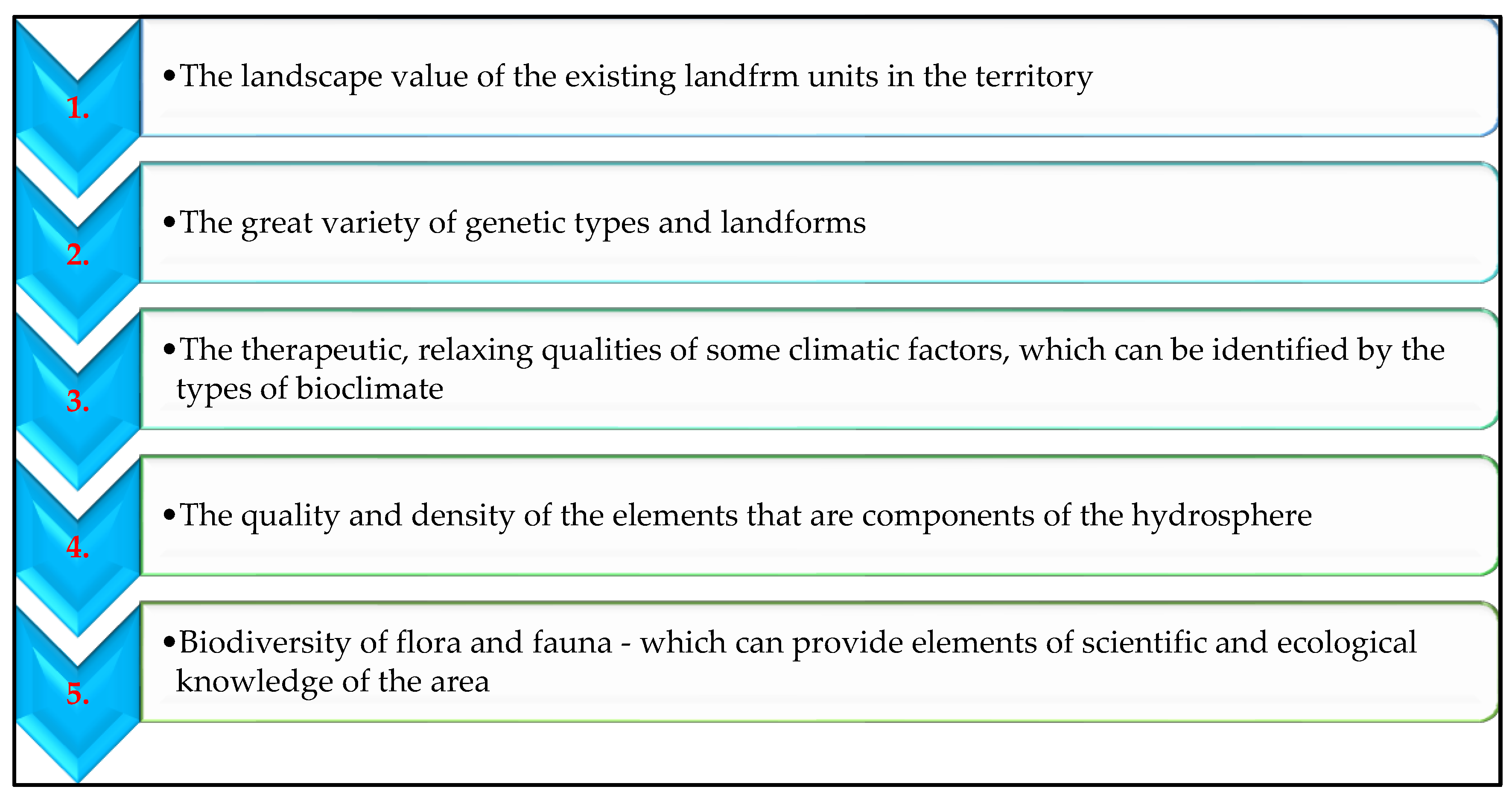
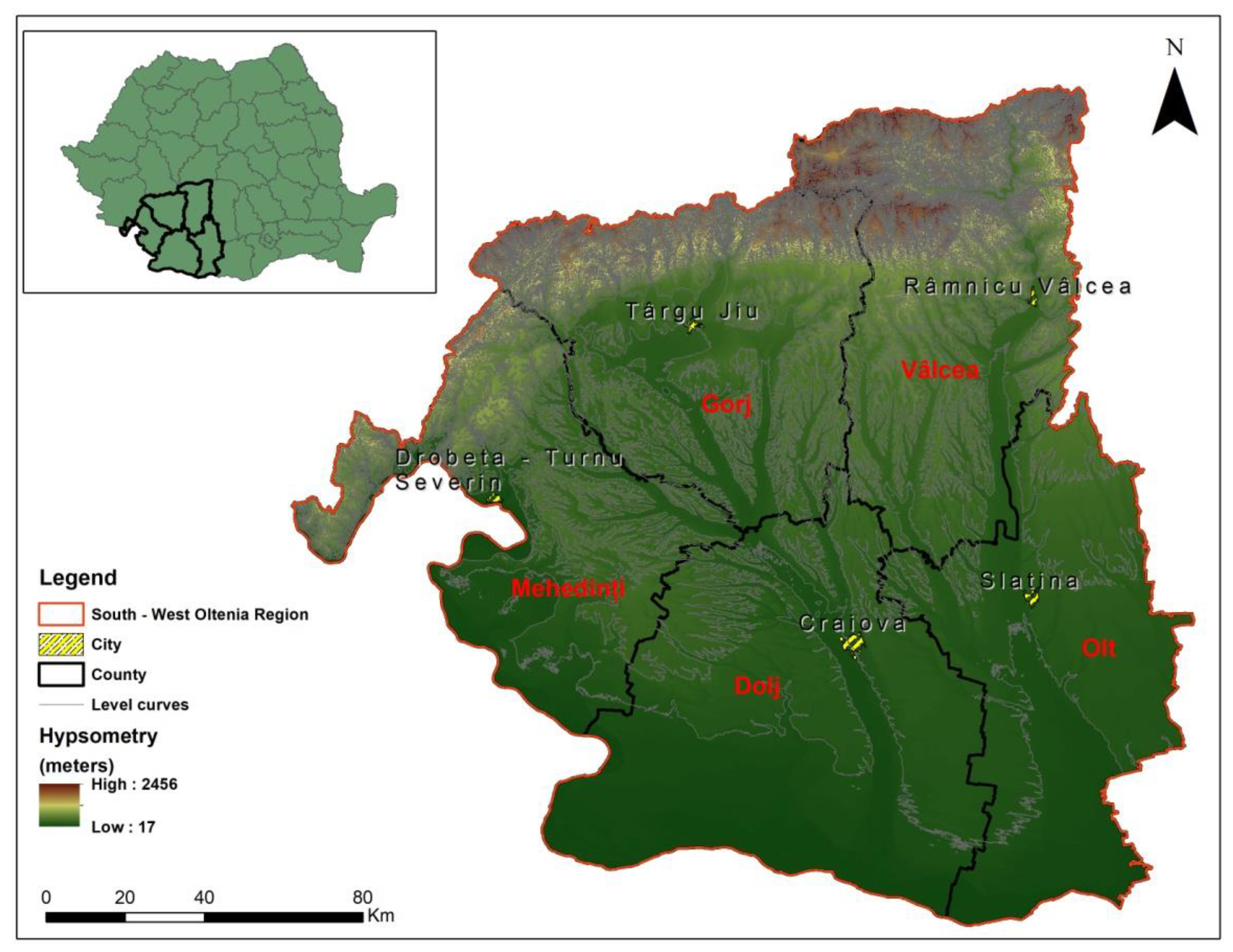
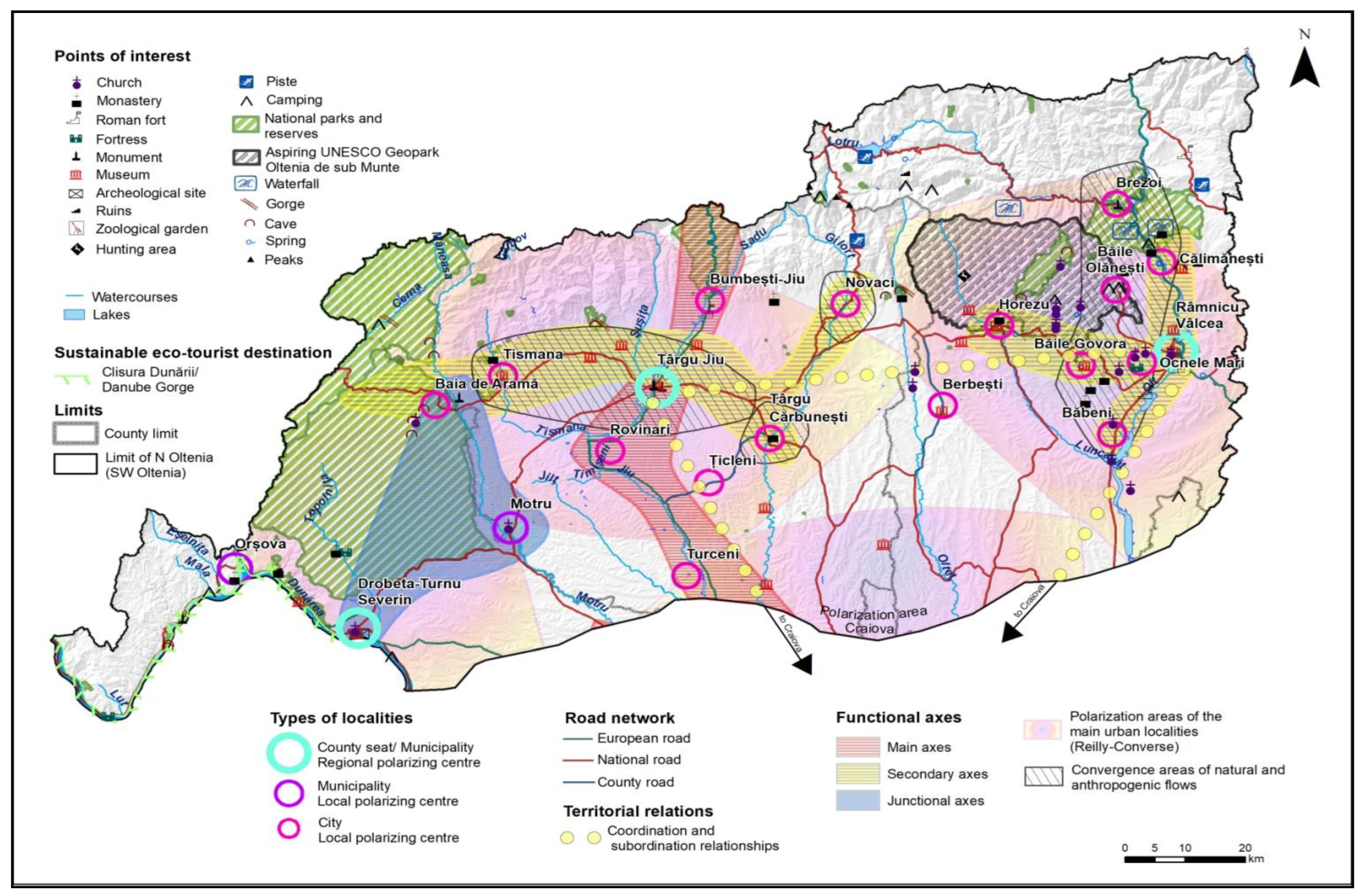

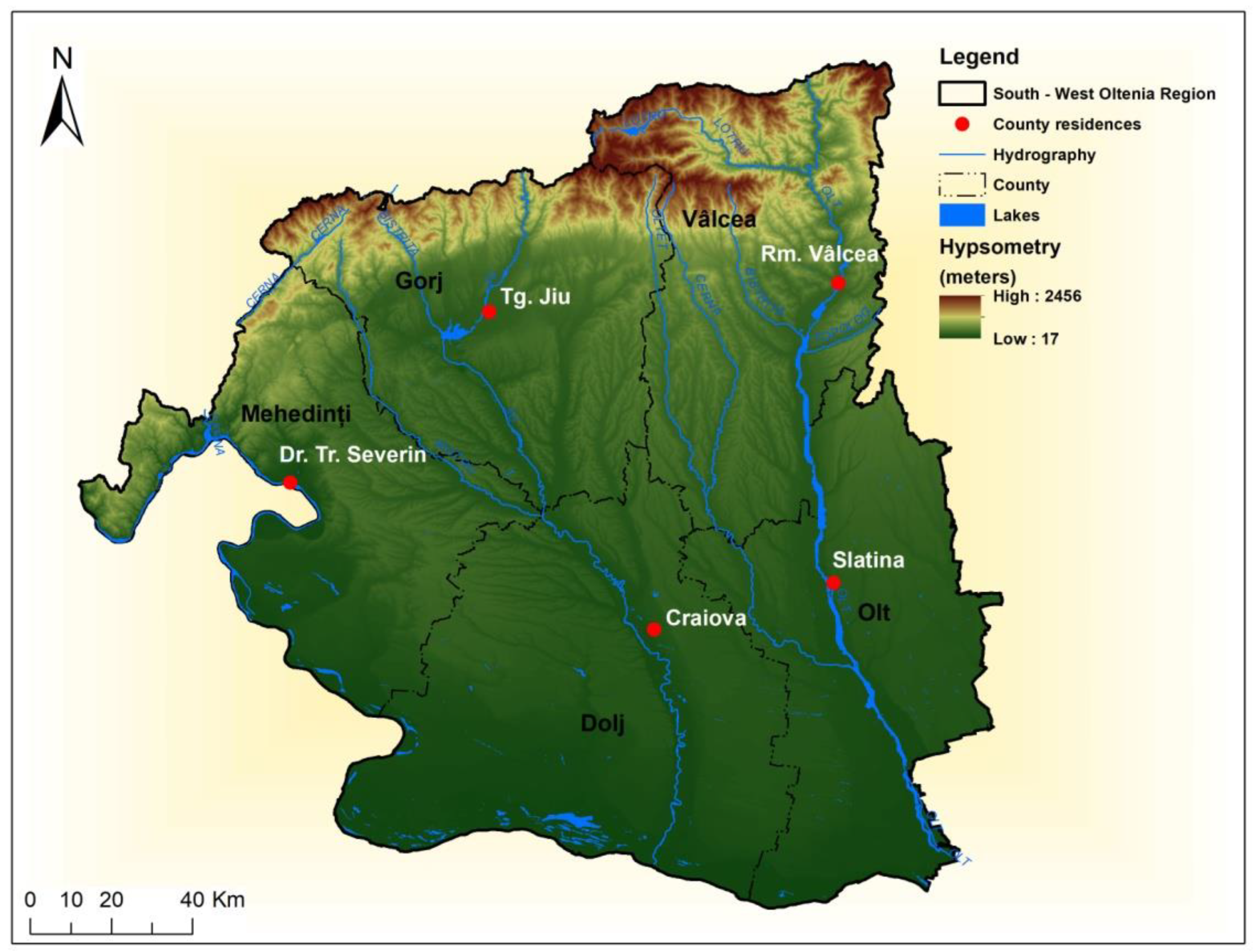

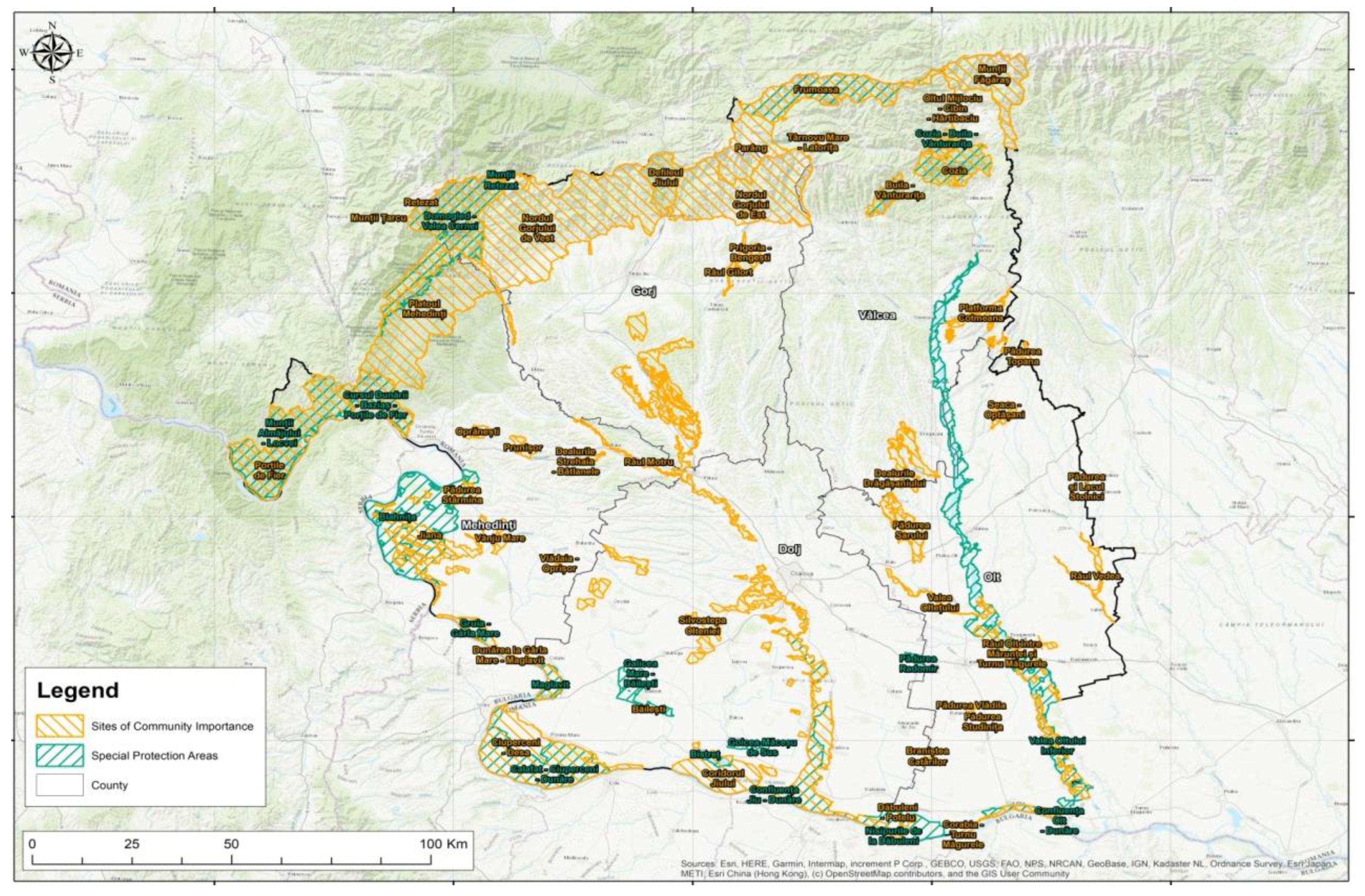
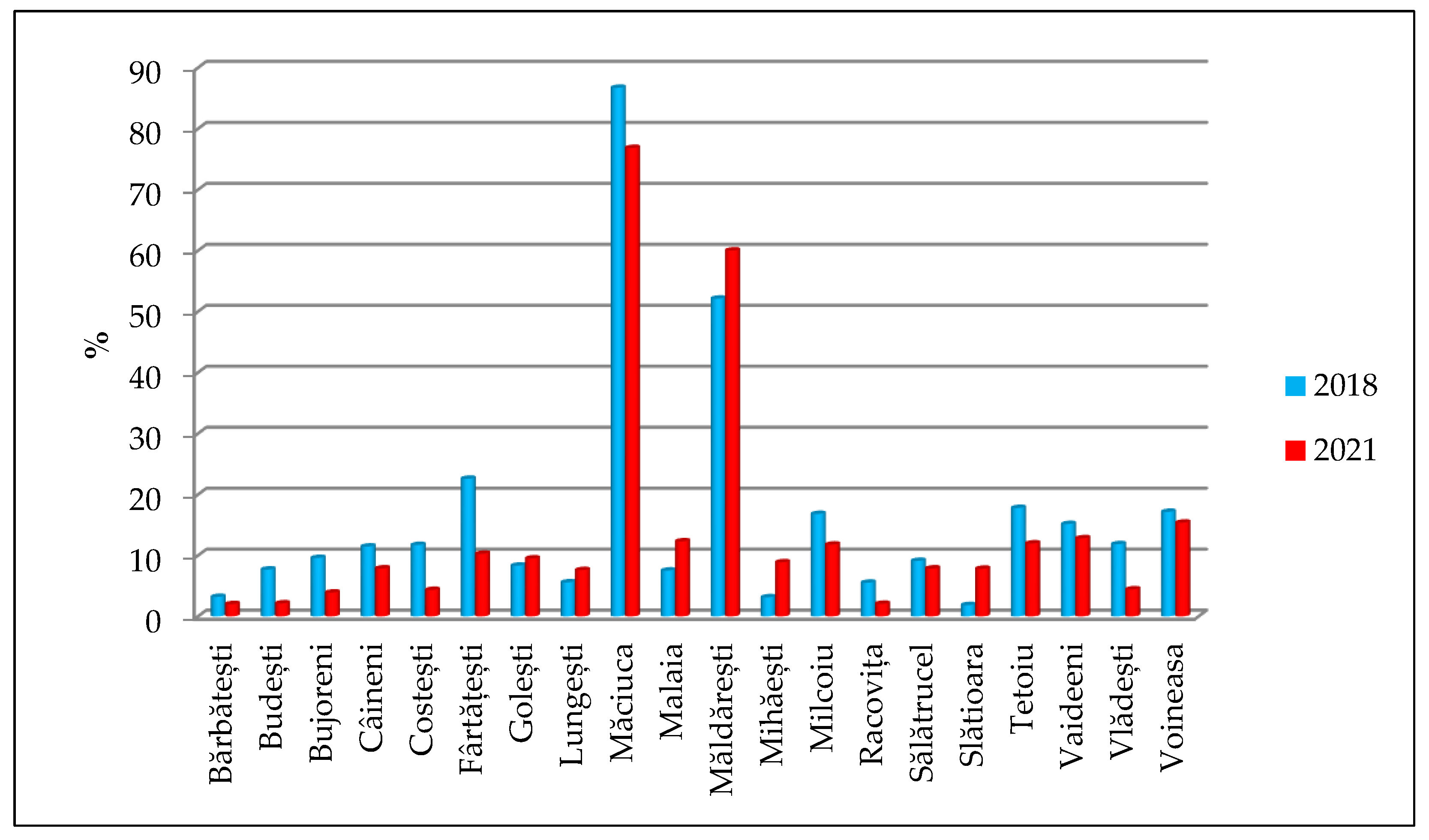

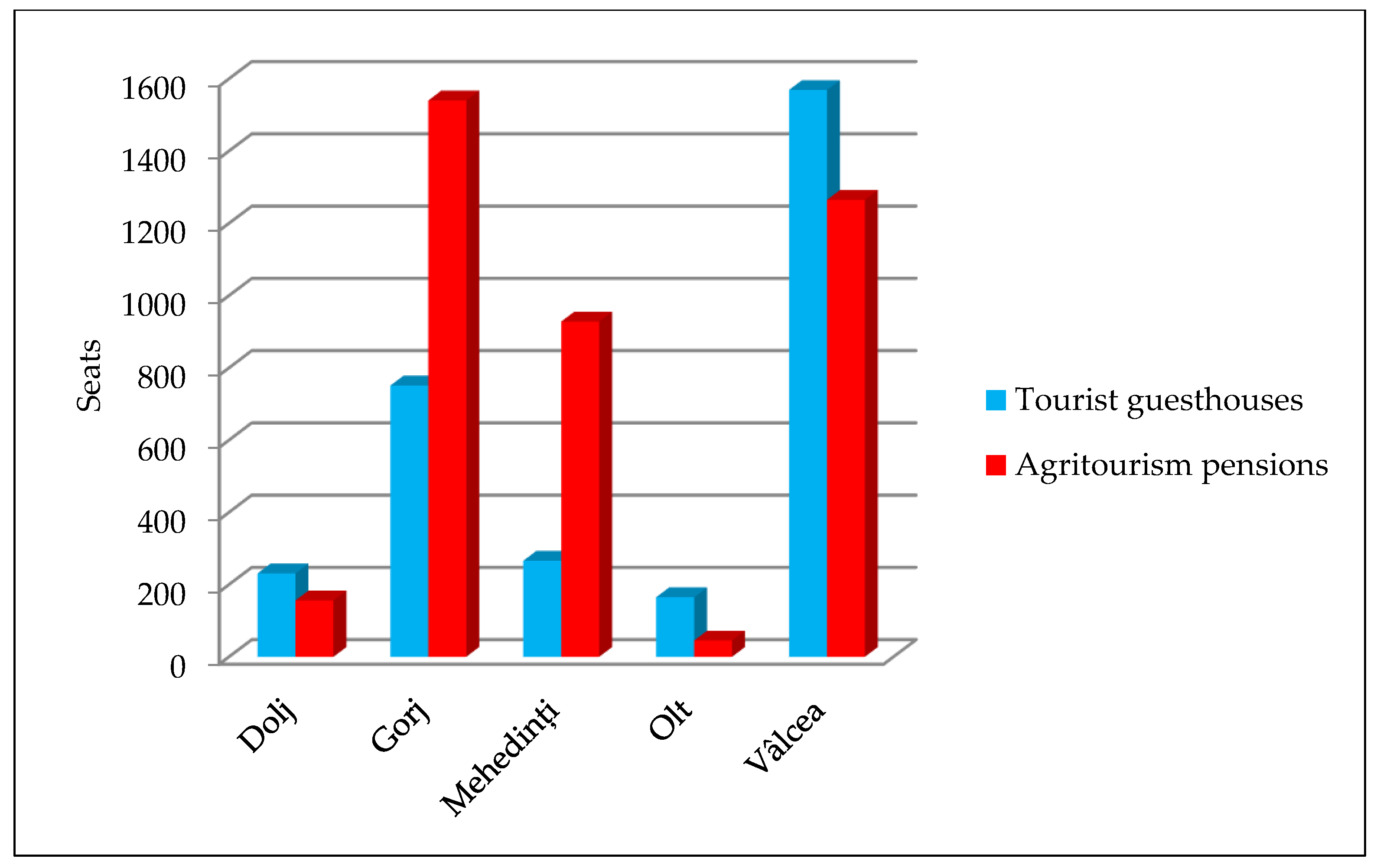

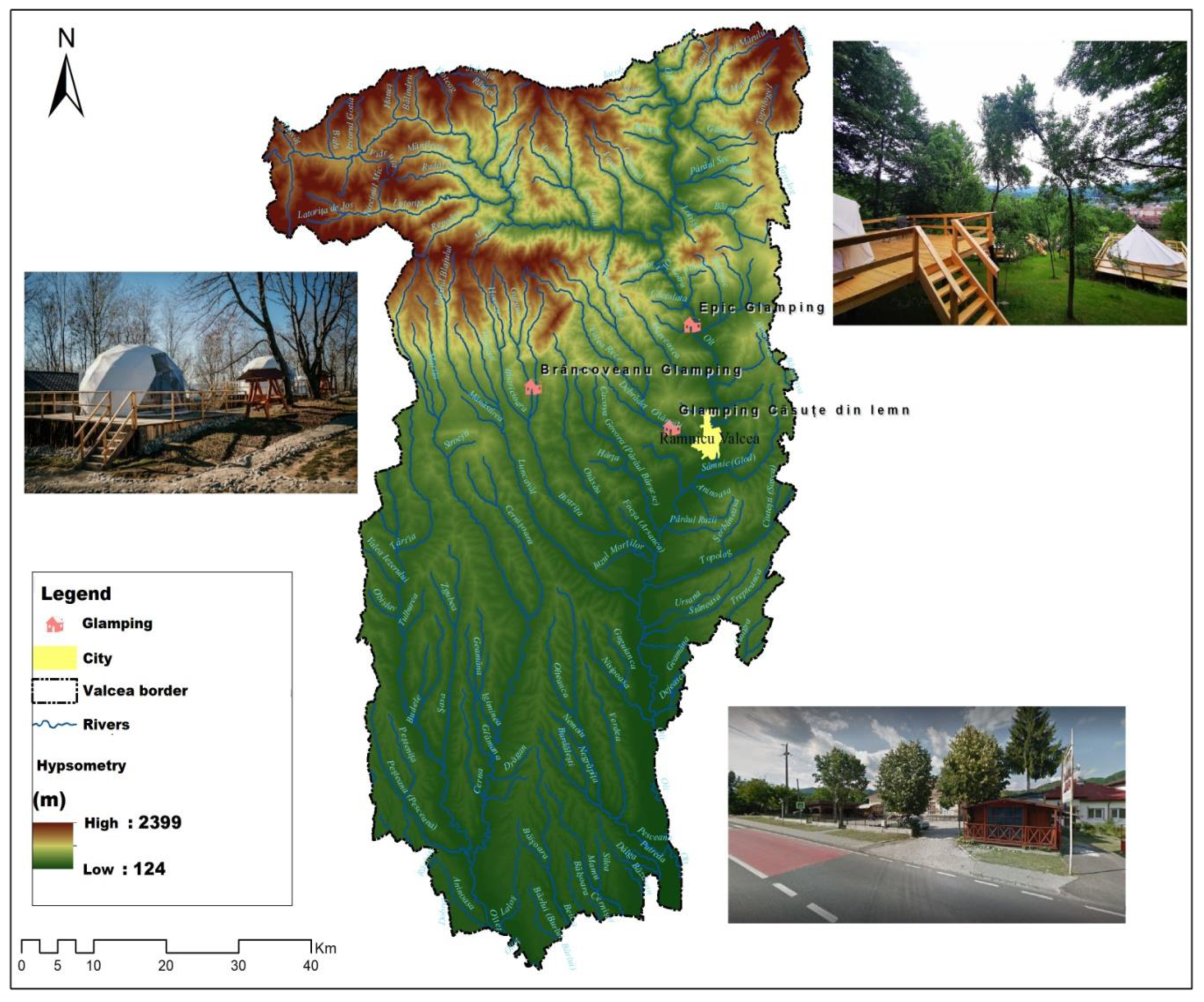
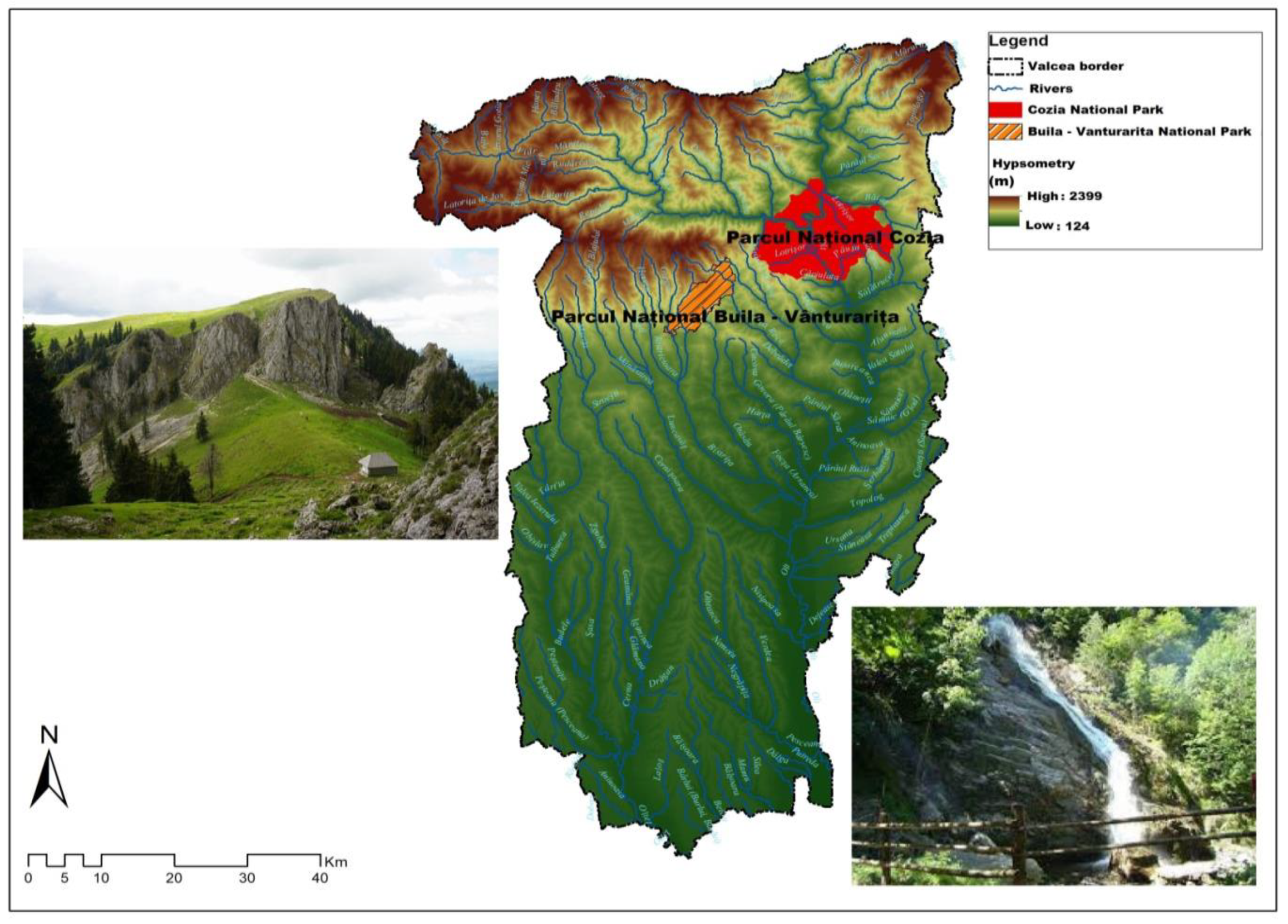
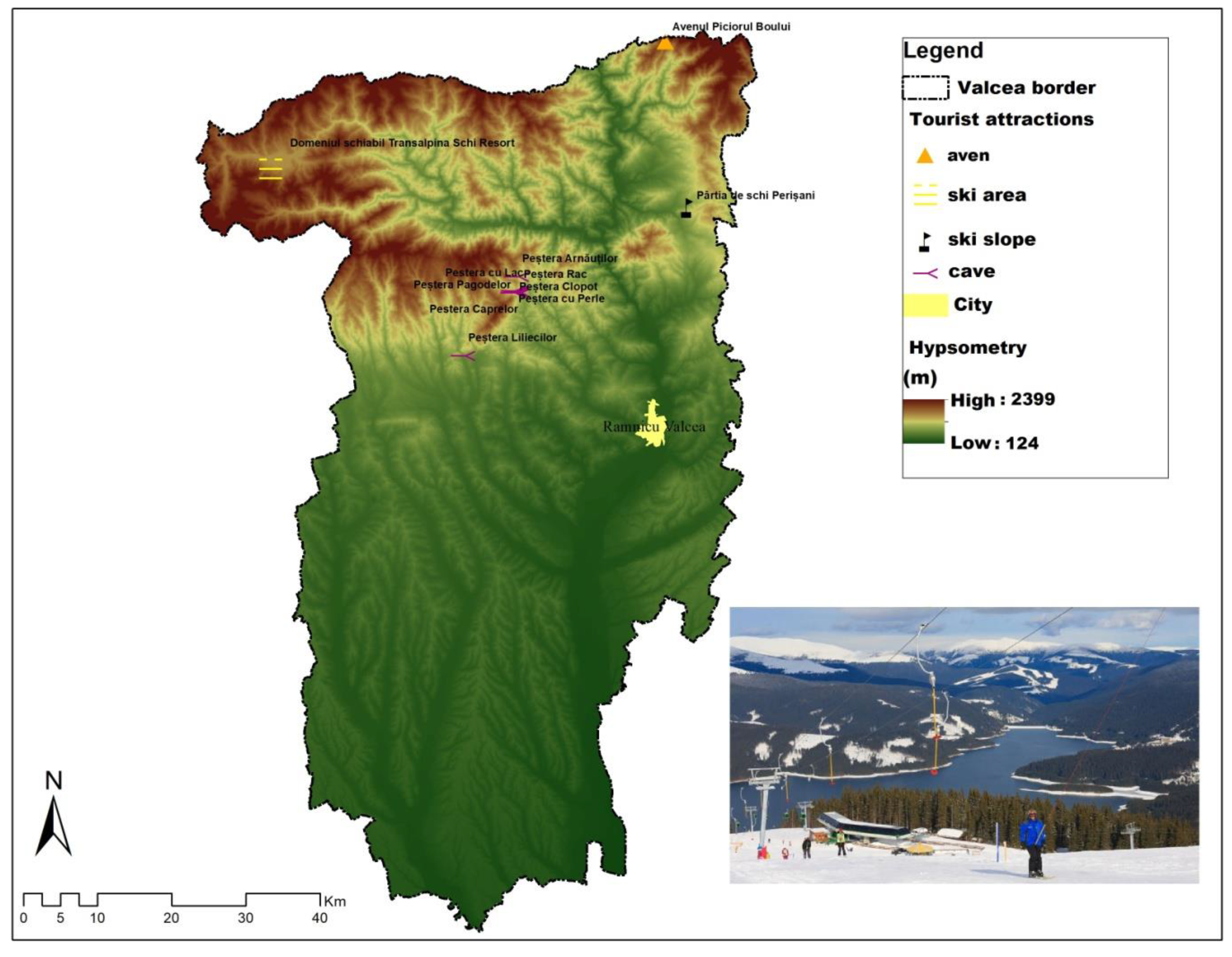
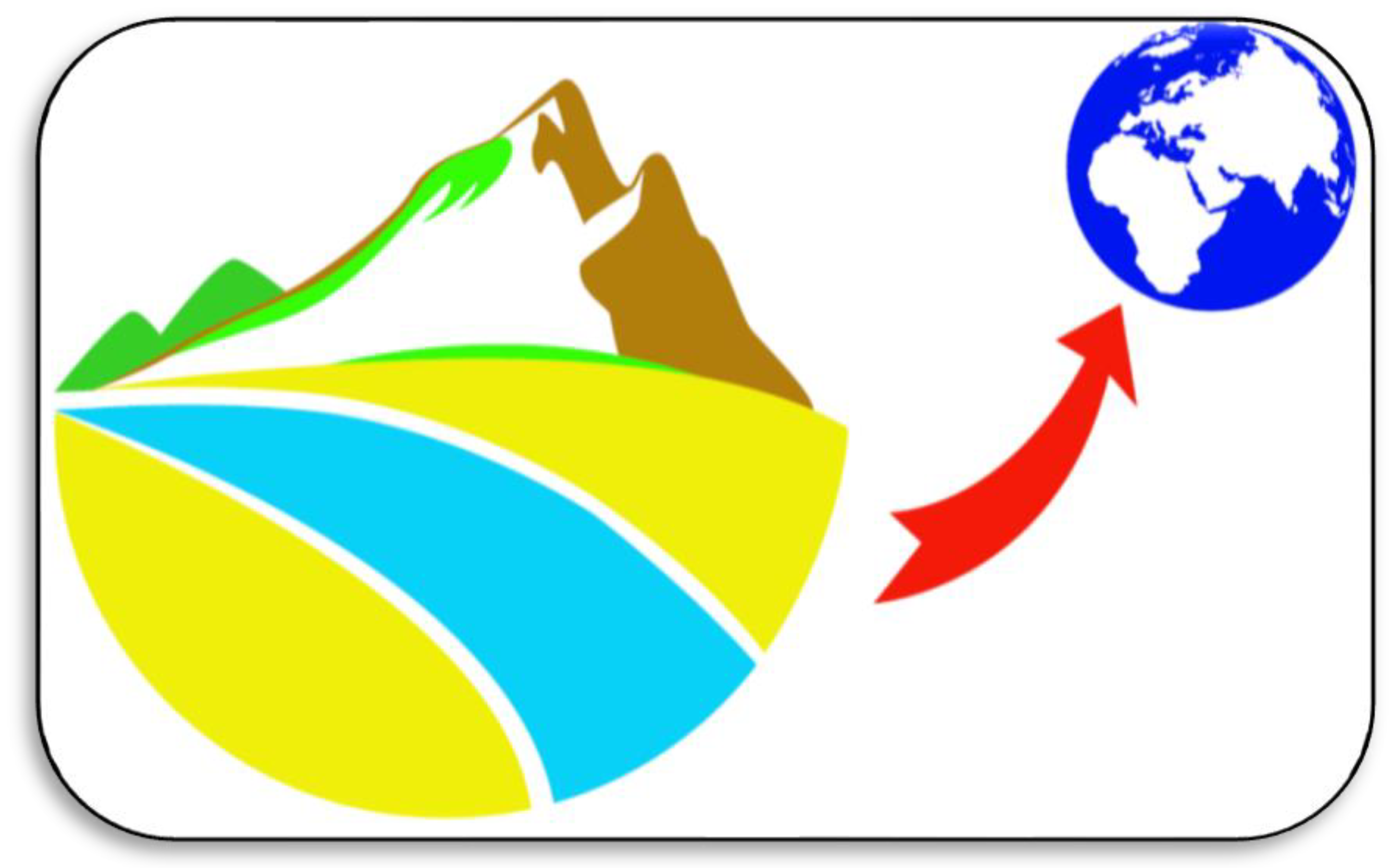
| Action 1: Tourism Infrastructure | |
|---|---|
| Program | Projects |
| Modernization of tourism infrastructure | 1. Development of the general access infrastructure to the protected areas in Vâlcea, Gorj and Mehedinți; 2. The establishment of tourist information/documentation centres; 3. Restoring the access infrastructure to natural and man-made tourist attractions for the creation of new tourist circuits; 4. The introduction of the Oltenia de sub Munte Geopark into tourist circuits—aspiring to be included in the UNESCO heritage. |
| Creation of new tourist areas | 1. The development and organization of leisure areas on the banks of the Danube; 2. Organization of hunting and fishing festivals in Mehedinți. |
| Restoration of tourist heritage | 1. Restoration of the cultural-historical tourist heritage of the region; 2. Rehabilitation of buildings in urban centres; 3. Modernization of parks, botanical gardens, and urban green spaces. |
| Action 2: Tourism promotion | |
| Program | Project |
| County, national and international promotion of tourist heritage | 1. Establish centres for the sale and purchase of ecological products from Oltenia; 2. Promotion of natural tourism products at traditional fairs and festivals; 3. The creation of innovative and competitive tourist packages from the point of view of the sustainable development of the region; 4. Participation of producers in international fairs and festivals; 5. Organizing a tourism fair in Oltenia. |
| Item. No. | Counties | Tourist Guesthouses (Number) | Agritourism Guesthouses (Number) |
|---|---|---|---|
| 1. | Dolj | 11 | 9 |
| 2. | Gorj | 34 | 97 |
| 3. | Mehedinți | 14 | 61 |
| 4. | Olt | 9 | 4 |
| 5. | Vâlcea | 77 | 83 |
Disclaimer/Publisher’s Note: The statements, opinions and data contained in all publications are solely those of the individual author(s) and contributor(s) and not of MDPI and/or the editor(s). MDPI and/or the editor(s) disclaim responsibility for any injury to people or property resulting from any ideas, methods, instructions or products referred to in the content. |
© 2023 by the authors. Licensee MDPI, Basel, Switzerland. This article is an open access article distributed under the terms and conditions of the Creative Commons Attribution (CC BY) license (https://creativecommons.org/licenses/by/4.0/).
Share and Cite
Drăguleasa, I.-A.; Niță, A.; Mazilu, M. Capitalization of Tourist Resources in the Post-COVID-19 Period—Developing the Chorematic Method for Oltenia Tourist Destination, Romania. Sustainability 2023, 15, 2018. https://doi.org/10.3390/su15032018
Drăguleasa I-A, Niță A, Mazilu M. Capitalization of Tourist Resources in the Post-COVID-19 Period—Developing the Chorematic Method for Oltenia Tourist Destination, Romania. Sustainability. 2023; 15(3):2018. https://doi.org/10.3390/su15032018
Chicago/Turabian StyleDrăguleasa, Ionuț-Adrian, Amalia Niță, and Mirela Mazilu. 2023. "Capitalization of Tourist Resources in the Post-COVID-19 Period—Developing the Chorematic Method for Oltenia Tourist Destination, Romania" Sustainability 15, no. 3: 2018. https://doi.org/10.3390/su15032018
APA StyleDrăguleasa, I.-A., Niță, A., & Mazilu, M. (2023). Capitalization of Tourist Resources in the Post-COVID-19 Period—Developing the Chorematic Method for Oltenia Tourist Destination, Romania. Sustainability, 15(3), 2018. https://doi.org/10.3390/su15032018








